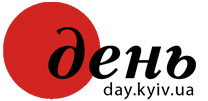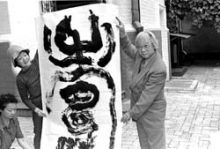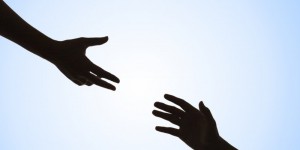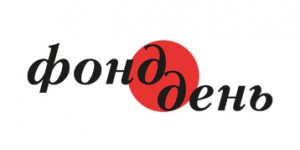This week on the occasion of the tenth anniversary of establishing diplomatic relations between Ukraine and Japan, the Embassy of Japan in Ukraine opened a series of cultural events named Japanese Fall in Ukraine 2002. Last Tuesday its first event, master class for the pupils of the Small Academy of Arts, was conducted by master of calligraphy Riuseki Morimoto in the courtyard of the Bohdan and Varvara Khanenko Museum of the Arts.
Most probably the idea of the children and journalists present in the courtyard about what they were into was not quite right. Instead of traditional narrow rice paper scrolls, thin brushes, and ink pots they saw huge sheets of paper, buckets with Indian ink, and brushes the smallest of which still looked more like a paintbrush. First Morimoto-sensei wrote several hieroglyphs himself, each in two versions: for instance, the hieroglyph “sea” inscribed with the thickest brush meant, in his words, “stormy, violent sea,” while the same hieroglyph written in a thinner brush symbolized “placid and tender one.” Then it came children’s turn: they took the brush in their hands while maestro ran it over the paper sheet, like we do when teaching children how to write letters. After that children were suggested to write any Ukrainian words on the paper in order to express by their inscriptions the feeling they put into these words, so that spectators understood and shared this feeling even if they did not understand the words themselves. In Riuseki Morimoto’s words, precisely this is the essence of the ancient art of calligraphy. Interestingly, according to Mr. Morimoto, they do not have such demonstrations in Japan, since calligraphy requires much patience and concentration. For instance, he once had to write the hieroglyph for road about five hundred times before he was satisfied with the result (which, by the way, the Kyivans will be able to see at Mr. Morimoto’s one man show hosted by the Khanenko Museum from September 5 to late October).
The master class was followed by a press conference where Deputy Head of Mission and Councilor at the Embassy of Japan to Ukraine Shusuke Watanabe spoke about the development of our countries’ relations in these first ten years, the aid given, both governmental and non-governmental, by Japan to Ukrainian medical, cultural, and educational establishments (suffice it to recall the fact our newspaper wrote about musical instruments and audio equipment passed to the National Opera of Ukraine). Embassy Second Secretary Ms. Ikujo tasoko explained to the journalists in a rather romantic way why the fall was chosen for celebrating the anniversary. In her words, autumn in Japan is a season of relaxation after a long, hot, and humid summer, time for gathering the fruits, summing up, and, of course, for the arts.
What will be the fruits of Japanese arts the organizers of the Japanese Fall in Ukraine are going to treat us with? Obviously, it won’t do without an ikebana demonstration (it will be held September 17 at Kyiv House of Scientists by Professors Nakamura Fukuhiro and Yamada Midori), Cup of the Ambassador of Japan International Sumo Tournament (September 8 at the Kharkiv Peresvit Sports Club), and, of course, a tea ceremony on October 26 at the Ukrainian House by Sotoku Nishikawa. The schedule includes also less predictable events, like a contest of speeches in Japanese, where the best of the 2000 students of this language in Ukraine will compete, or a concert by Japan’s Dakuto group playing traditional wadaiko drums







